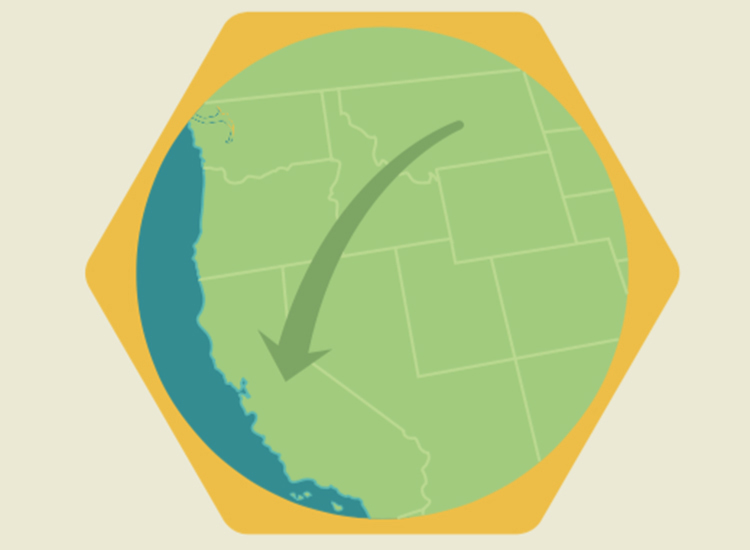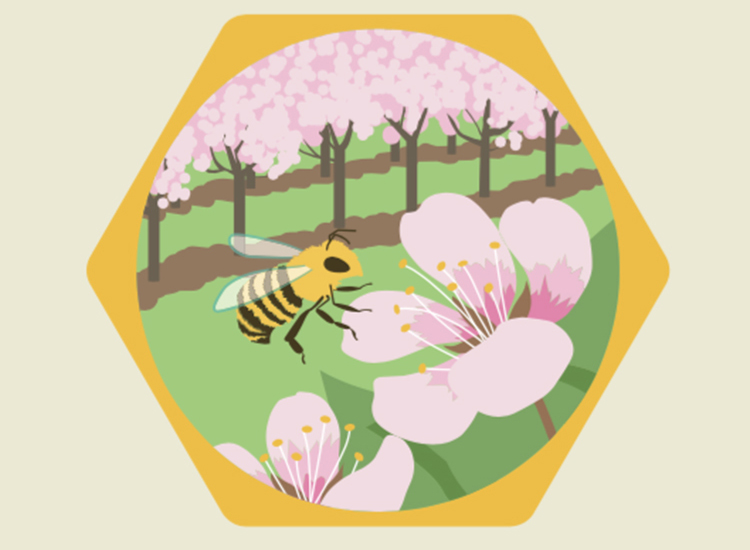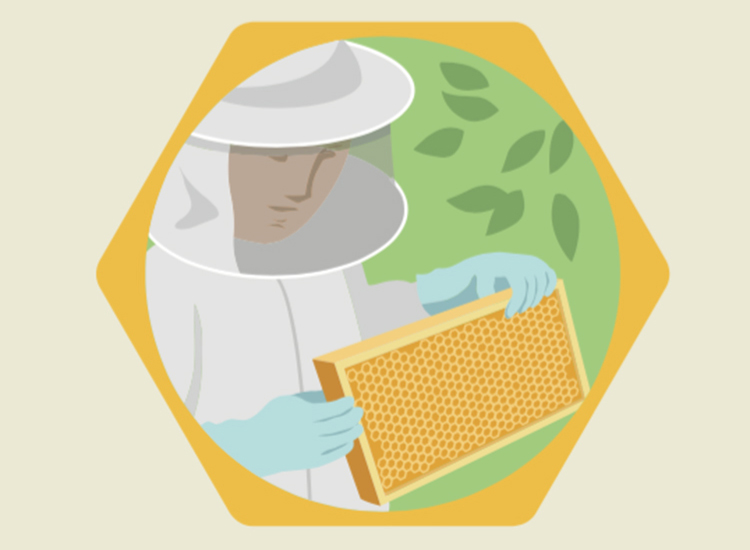Home > Montana > Montana Crops & Livestock > Seasons of the Honeybee
Seasons of the Honeybee
Spring
From spring through summer, honeybees feed off a variety of flowering plants in Montana – from weeds to crops and trees. Montana beekeepers distribute their bees around various sites, with locations dependent on contractual agreements and state regulations. Some may be in the mountains, while others are in the prairie. As the bees make honey, keepers add supers – or boxes of frames – to the top of the hives in order to collect the honey.
Summer
In late summer, beekeepers start removing the supers from beehives in order to harvest the honey. Keepers then treat honeybees for mites, and most also treat their hives for diseases. In addition, keepers may apply preventative treatments to keep hives healthy and prevent issues like American foulbrood, which is a destructive disease.

Fall
By mid-fall, honeybees are loaded into trucks and taken to California to help pollinate the state’s crops – particularly, almond trees. Of the 1.6 million hives sent to California each year, more than 10 percent travel from Montana. Because most almond blossoms in California are not self-pollinating, the state’s groves heavily rely on cross-pollination from honeybees.
Winter
Montana honeybees remain in California for several months through winter and into spring, helping pollinate the state’s almond tree groves during the crucial blooming period from February through March.
Honey, We’re Home
Many beekeepers keep their honeybees in California through the spring, and by mid-June, most Montana honeybees have returned home to rest, feed and prepare for the fall and start the cycle all over again.





